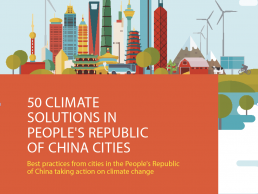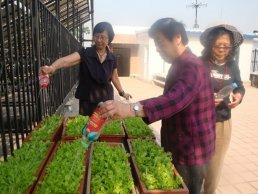First appeared in

Asian Development Bank
50 climate solutions from cities in the People's Republic of China
Beijing’s low-carbon pilot communities are showcasing the best decarbonization initiatives, engaging citizens in lowering emissions and leading more sustainable lives.
Beijing is complementing its clean industrial growth with new initiatives to decarbonize communities and residential areas. Launched in 2014, the low-carbon communities pilot scheme has been met with enthusiasm by Beijing communities. Projects under the scheme are varied in scale and sector, tackling issues from energy and water consumption to waste management and recycling rates. Implementation of each project is the responsibility of village-level committees, emphasizing the importance of local engagement. Researchers from the Beijing Normal University have been involved in monitoring progress in three of the pilot communities, and have estimated annual carbon emissions reduction of over 200,000 tons in these three communities alone.
205K
TONS OF GREENHOUSE GAS EMISSIONS REDUCED BY THREE INITIATIVES.
One example in Minan community is the “Green Kitchen House” project, processing 36 tons of kitchen waste daily. The project treats the organic matter, diverting it from landfill and creating a valuable compost product oered for free to residents. The scheme has been so successful that several other communities in Beijing are emulating Minan’s efforts. By initiating change from the ground up, city o¡cials are hoping to start a chain reaction of sustainability changes in Beijing’s communities.

Rooftop garden in one of the low-carbon communities Beijing is encouraging its citizens to live more sustainably (photo by Hongmin Dong).
The Challenge
Residential and industrial buildings contribute to approximately 40% of greenhouse gas emissions in the PRC, and, in recent years, Beijing has made significant strides to address the carbon intensity of industry. The PRC’s capital is now focusing on initiatives to reduce emissions from residential buildings.
Co-Benefits
Economic Improving the e¡ciency of resource use has significant economic benefits, totaling CNY7.7 million annually for three of the low-carbon communities.
Environment Initiatives that save water and energy, increase recycling, and reduce waste contribute directly and indirectly to a reduction in pollution from low-carbon communities.
Social Local residents experience a range of health co-benefits. Active transport prevents lifestyle diseases, and expanded green areas improve mental well-being, while cleaner air reduces the risk of respiratory illness.

